
How to Use LCD 16x2 I2C Display: Examples, Pinouts, and Specs
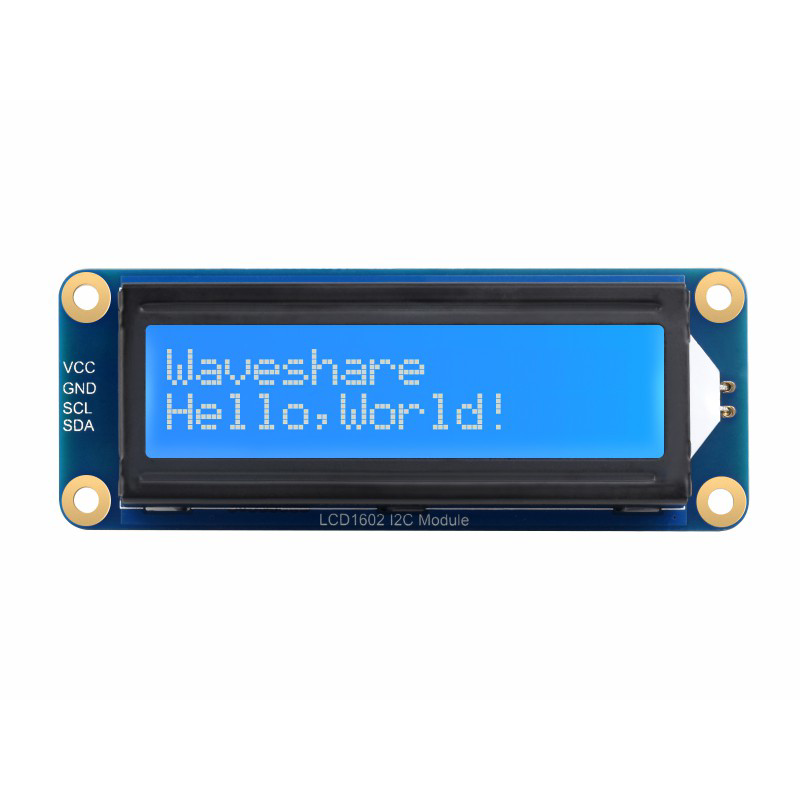
 Design with LCD 16x2 I2C Display in Cirkit Designer
Design with LCD 16x2 I2C Display in Cirkit DesignerIntroduction
The LCD 16x2 I2C Display is a 16-column by 2-row character display module that uses I2C (Inter-Integrated Circuit) communication for simplified interfacing with microcontrollers. This display is ideal for projects requiring a compact and efficient way to display text or simple graphics. The I2C interface reduces the number of pins required for connection, making it perfect for applications with limited GPIO availability.
Explore Projects Built with LCD 16x2 I2C Display
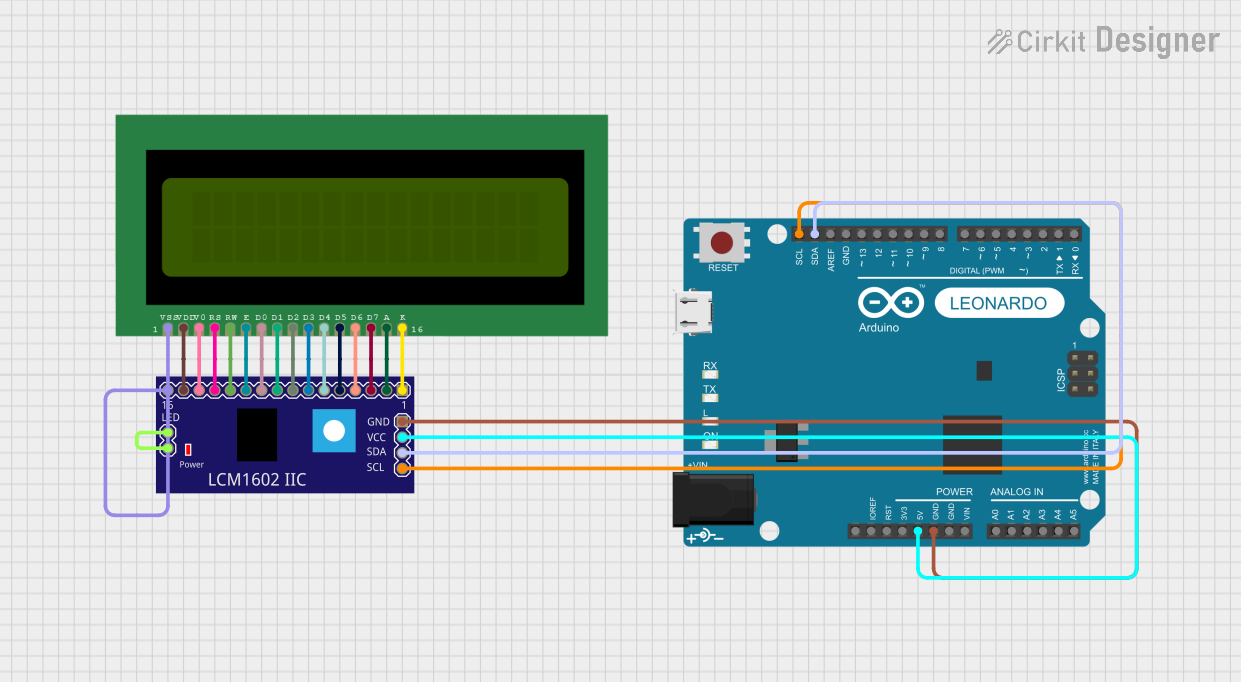
 Open Project in Cirkit Designer
Open Project in Cirkit Designer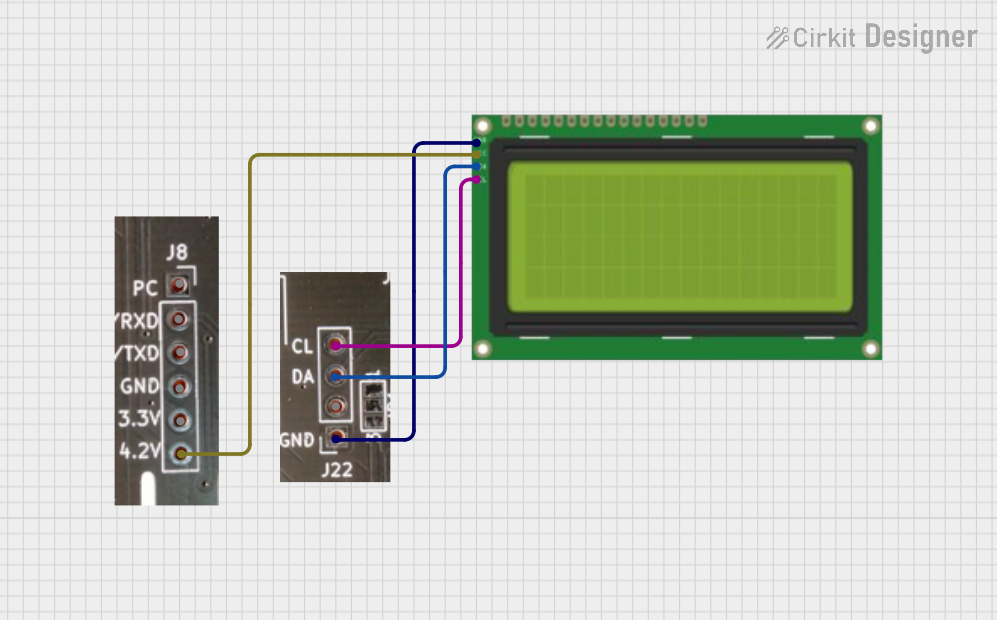
 Open Project in Cirkit Designer
Open Project in Cirkit Designer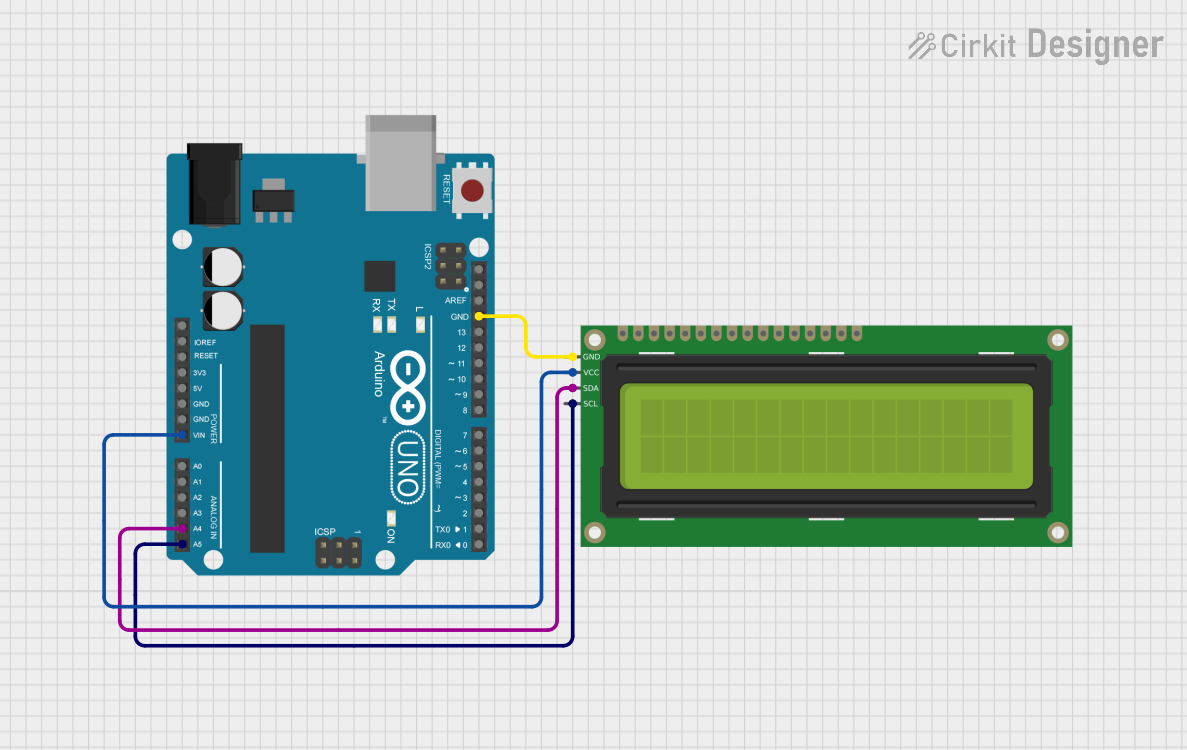
 Open Project in Cirkit Designer
Open Project in Cirkit Designer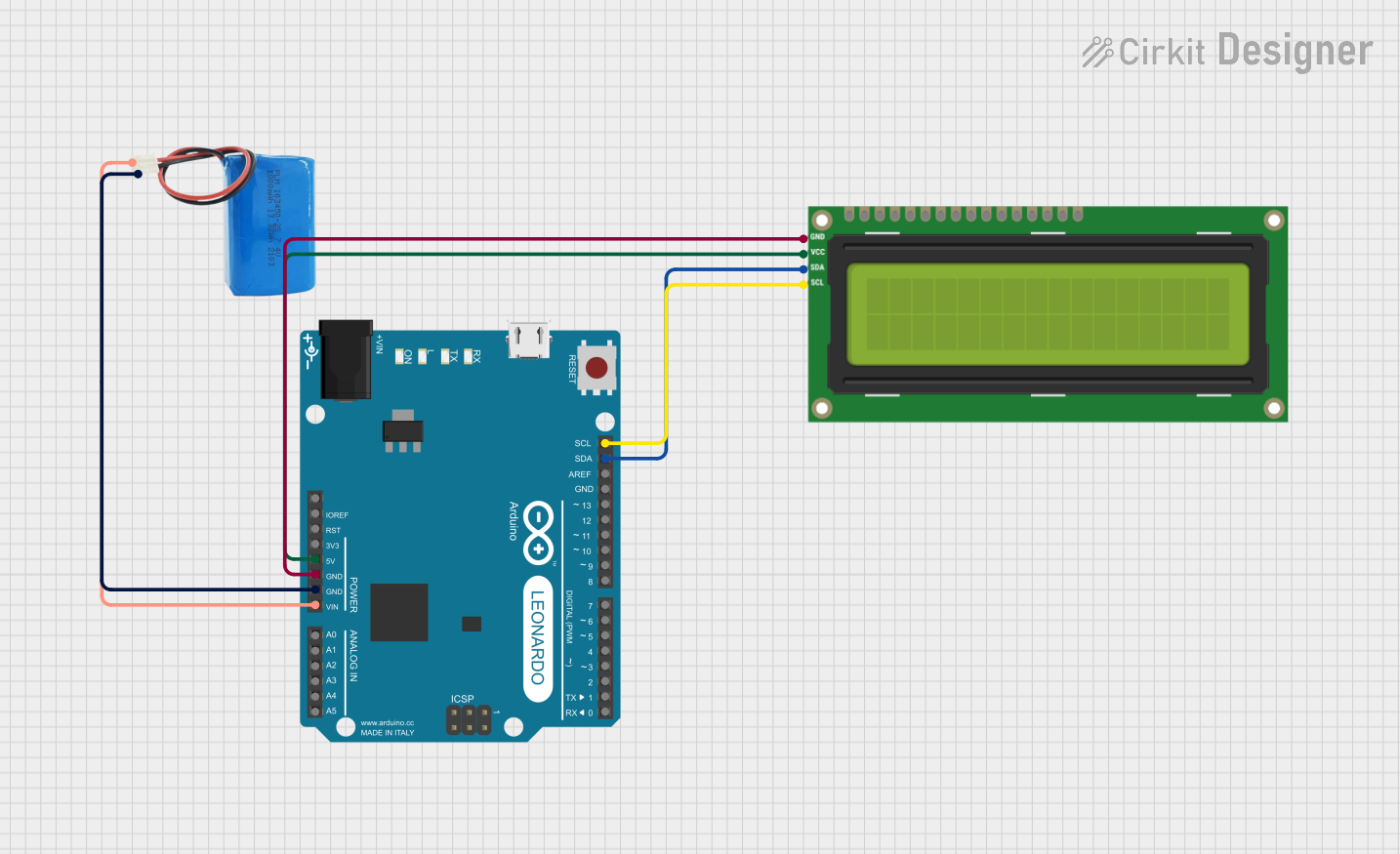
 Open Project in Cirkit Designer
Open Project in Cirkit DesignerExplore Projects Built with LCD 16x2 I2C Display

 Open Project in Cirkit Designer
Open Project in Cirkit Designer
 Open Project in Cirkit Designer
Open Project in Cirkit Designer
 Open Project in Cirkit Designer
Open Project in Cirkit Designer
 Open Project in Cirkit Designer
Open Project in Cirkit DesignerCommon Applications and Use Cases
- Microcontroller-based projects (e.g., Arduino, Raspberry Pi)
- User interfaces for embedded systems
- Real-time data display (e.g., temperature, humidity, or sensor readings)
- Educational and prototyping purposes
- Home automation systems
Technical Specifications
Key Technical Details
| Parameter | Value |
|---|---|
| Display Type | 16x2 Character LCD |
| Communication Protocol | I2C (Inter-Integrated Circuit) |
| Operating Voltage | 5V DC |
| Backlight | LED (controllable) |
| Contrast Adjustment | Via onboard potentiometer |
| I2C Address (Default) | 0x27 (can vary by module) |
| Dimensions | ~80mm x 36mm x 12mm |
| Operating Temperature | -20°C to +70°C |
Pin Configuration and Descriptions
The LCD 16x2 I2C Display has a 4-pin interface for I2C communication. Below is the pinout:
| Pin | Name | Description |
|---|---|---|
| 1 | GND | Ground (0V) |
| 2 | VCC | Power supply (5V DC) |
| 3 | SDA | Serial Data Line for I2C communication |
| 4 | SCL | Serial Clock Line for I2C communication |
Usage Instructions
How to Use the Component in a Circuit
Wiring the Display:
- Connect the
GNDpin of the display to the ground pin of your microcontroller. - Connect the
VCCpin of the display to the 5V power pin of your microcontroller. - Connect the
SDApin of the display to the SDA pin of your microcontroller (e.g., A4 on Arduino UNO). - Connect the
SCLpin of the display to the SCL pin of your microcontroller (e.g., A5 on Arduino UNO).
- Connect the
Install Required Libraries:
- For Arduino, install the
LiquidCrystal_I2Clibrary via the Library Manager in the Arduino IDE.
- For Arduino, install the
Write and Upload Code:
- Use the example code below to initialize and display text on the LCD.
Example Code for Arduino UNO
#include <Wire.h> // Include the Wire library for I2C communication
#include <LiquidCrystal_I2C.h> // Include the LiquidCrystal_I2C library
// Initialize the LCD with I2C address 0x27 and 16x2 dimensions
LiquidCrystal_I2C lcd(0x27, 16, 2);
void setup() {
lcd.begin(); // Initialize the LCD
lcd.backlight(); // Turn on the backlight
lcd.setCursor(0, 0); // Set cursor to the first column, first row
lcd.print("Hello, World!"); // Print text on the first row
lcd.setCursor(0, 1); // Set cursor to the first column, second row
lcd.print("LCD 16x2 I2C"); // Print text on the second row
}
void loop() {
// No actions in the loop for this example
}
Important Considerations and Best Practices
- I2C Address: The default I2C address is typically
0x27, but it may vary depending on the module. Use an I2C scanner sketch to determine the correct address if needed. - Power Supply: Ensure a stable 5V power supply to avoid flickering or malfunctioning of the display.
- Contrast Adjustment: Use the onboard potentiometer to adjust the contrast of the display for optimal visibility.
- Backlight Control: The backlight can be turned on or off programmatically using the
lcd.backlight()andlcd.noBacklight()functions.
Troubleshooting and FAQs
Common Issues and Solutions
Display Not Turning On:
- Verify the wiring connections, especially
VCCandGND. - Ensure the power supply is 5V DC.
- Verify the wiring connections, especially
No Text Displayed:
- Check the I2C address in your code. Use an I2C scanner sketch to confirm the address.
- Adjust the contrast using the onboard potentiometer.
Flickering or Unstable Display:
- Ensure a stable power supply.
- Check for loose connections in the circuit.
Backlight Not Working:
- Verify that the
lcd.backlight()function is called in the code. - Check the module for any physical damage.
- Verify that the
FAQs
Q: How do I find the I2C address of my display?
A: Use an I2C scanner sketch available in the Arduino IDE examples. It will detect and print the I2C address of connected devices.
Q: Can I use this display with a 3.3V microcontroller?
A: While the display operates at 5V, some modules are compatible with 3.3V logic levels. Check the module's datasheet or use a logic level shifter.
Q: Can I display custom characters?
A: Yes, the LiquidCrystal_I2C library supports custom characters. Refer to the library documentation for details.
Q: What is the maximum cable length for I2C communication?
A: The maximum length depends on the pull-up resistor values and the environment, but typically it is recommended to keep the cable length under 1 meter for reliable communication.